To ensure your notarizations go smoothly and stay error-free, these tips will keep you on the right track:
- Don't forget your Notary seal
- Keep reference materials handy
- Make sure the signer has proof of identity
- Have correct Notary certificate wording ready
- Assess the signer's awareness and willingness
- Complete your journal entry
- Complete the notarization
- Check your work before the signer leaves with the document
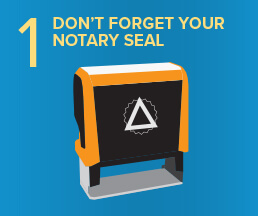 Most states require Notaries to use an official ink stamp or embosser. Always make sure you have your seal available and ready when preparing for a notarization.
Most states require Notaries to use an official ink stamp or embosser. Always make sure you have your seal available and ready when preparing for a notarization.
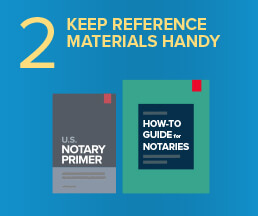 Always keep reference materials for your state's Notary laws on hand, such as a Notary handbook published by your state or a reference guide published by a reputable professional organization. That way, if a question arises during the notarization, you will have information available to find the answer.
Always keep reference materials for your state's Notary laws on hand, such as a Notary handbook published by your state or a reference guide published by a reputable professional organization. That way, if a question arises during the notarization, you will have information available to find the answer.
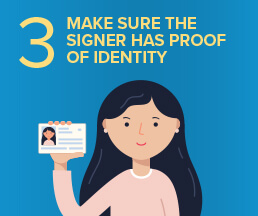 Before the notarization takes place, ask the signer to make sure he or she has acceptable proof of identity. If you are traveling to perform a mobile notarization, contact the signer ahead of the appointment to confirm the signer will have proper identification available when you arrive.
Before the notarization takes place, ask the signer to make sure he or she has acceptable proof of identity. If you are traveling to perform a mobile notarization, contact the signer ahead of the appointment to confirm the signer will have proper identification available when you arrive.
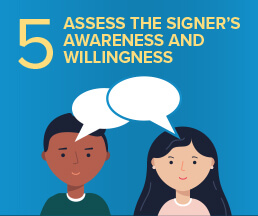 Speak with the signer to confirm the signer appears clear and alert, understands the type of document that is being signed, and is willing to sign. If there are other people present, make sure the signer does not appear pressured or is being coerced to sign against his or her wishes.
Speak with the signer to confirm the signer appears clear and alert, understands the type of document that is being signed, and is willing to sign. If there are other people present, make sure the signer does not appear pressured or is being coerced to sign against his or her wishes.
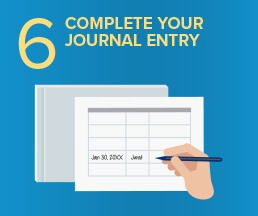 Complete your journal entry with all required information and signatures before you notarize. This ensures that you have all necessary information for your records before the signer leaves.
Complete your journal entry with all required information and signatures before you notarize. This ensures that you have all necessary information for your records before the signer leaves.
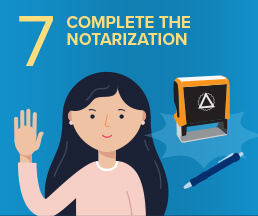 Fill in all required information in the Notary certificate wording and affix your seal. If asked to perform a jurat, remember to administer the required verbal oath or affirmation to the signer.
Fill in all required information in the Notary certificate wording and affix your seal. If asked to perform a jurat, remember to administer the required verbal oath or affirmation to the signer.
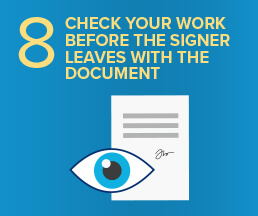 Check to make sure all information in the Notary certificate is correct and meets your state's requirements. In the event you find an error, simply line through the error, write the correct information, and initial and date the correction while the signer and document are still present. Remember, some states do not permit Notaries to correct errors in the certificate after the notarization has been completed. If you are commissioned in one of these states and an error is found afterwards, you will have to complete a new notarization on the same document.
Check to make sure all information in the Notary certificate is correct and meets your state's requirements. In the event you find an error, simply line through the error, write the correct information, and initial and date the correction while the signer and document are still present. Remember, some states do not permit Notaries to correct errors in the certificate after the notarization has been completed. If you are commissioned in one of these states and an error is found afterwards, you will have to complete a new notarization on the same document.
Click here to download and print all 8 tips.
David Thun is the Assistant Managing Editor at the National Notary Association.